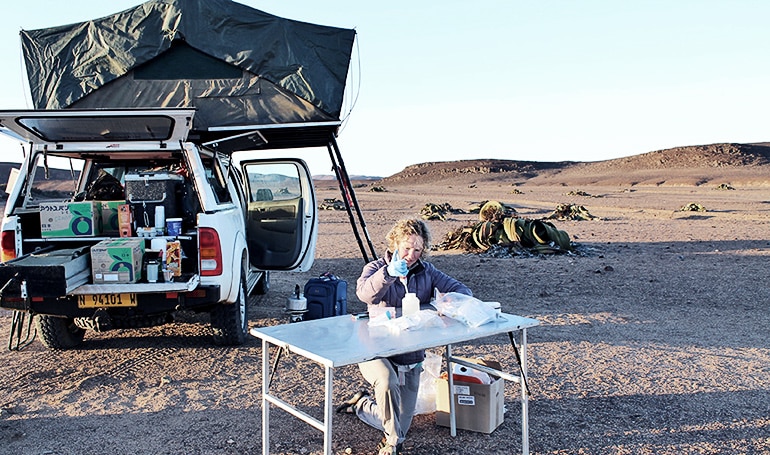Fog transports microbes over long distances and deposits them in new environments, according to a new study.
The researchers compared fog microbial communities in two very different, fog-dominated ecosystems: Coastal Maine, whose geography is conducive to the creation of marine aerosols and frequent fog formation; and the Namib Desert, a hyperarid coastal fog desert on the west coast of southern Africa.
The team analyzed air samples—both foggy and clear—and rain, filtered to capture bacterial cells at each site, to record the variety and abundance of micro-organisms present. In Maine, researchers collected data within 30 meters of the ocean during two field campaigns. In the Namib Desert, they collected data at two sites about 50 kilometers away from the coast.
“Fog droplets were found to be an effective medium for microbial sustenance and transport,” says Sarah Evans, an assistant professor who holds joint appointments in the integrative biology and microbiology and molecular genetics departments at Michigan State University and is a Kellogg Biological Station faculty member. “At both sites, microbial diversity was higher during and after foggy conditions when compared to clear conditions.”

Moisture in fog allows microbes to persist longer than they would in dry aerosols. As a result, fog deposits a greater abundance and diversity of microbes onto the land than deposition by air alone.
“When fog rolls in, it can shift the composition of terrestrial airborne microbial communities,” says co-lead author Elias Dueker of Bard College. “And in a fascinating twist, on the journey from the ocean to the land, microbes not only survive, but change during transport. Fog itself is a novel, living ecosystem.”
The authors note that there are also possible health implications for the marine-terrestrial fog connection. Fog at both sites contained pathogenic microbes, including suspected plant pathogens and species known to cause respiratory infections in immune-compromised people. This raises concern about the role that fog could play in transporting harmful microbes.
“We need a better understanding of fog’s role as a vector for microbes, with special attention to pathogens that threaten health,” says coauthor Kathleen Weathers, a senior scientist at the Cary Institute of Ecosystem Studies. “Warming sea surface temperatures and altered wind regimes are likely to affect fog distribution in many coastal regions.”
The team identified the need for future studies that help predict which microbes fog is most likely to transport and deposit. Using traits like spore size and behavior, researchers could develop models that help forecast harmful fog.
“These findings underscore the potential for fog to serve as an important and understudied mechanism of microbial dispersal and ecosystem connections between the land and sea,” Evans says. “Its patterns and functional implications from these systems can serve as a foundation for future work in fog biology and its role in terrestrial ecosystem dynamics.”
The research appears in the journal Science of the Total Environment. Additional coauthors are from MSU, Bard College, and the Cary Institute of Ecosystem Studies.
Source: Val Osowski for Michigan State University



